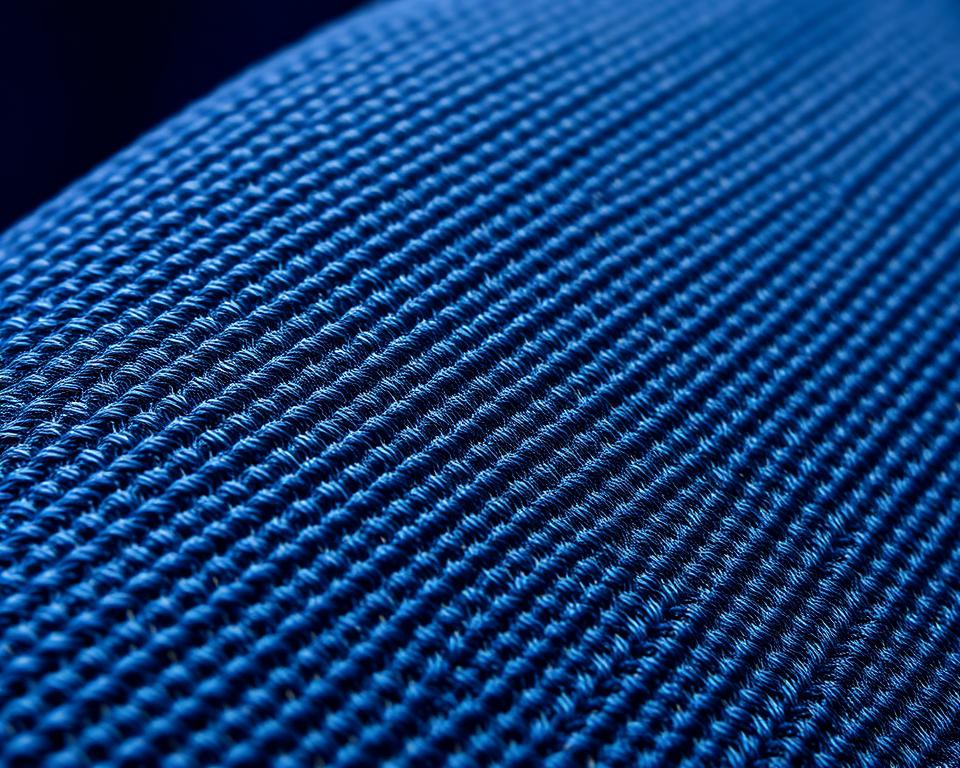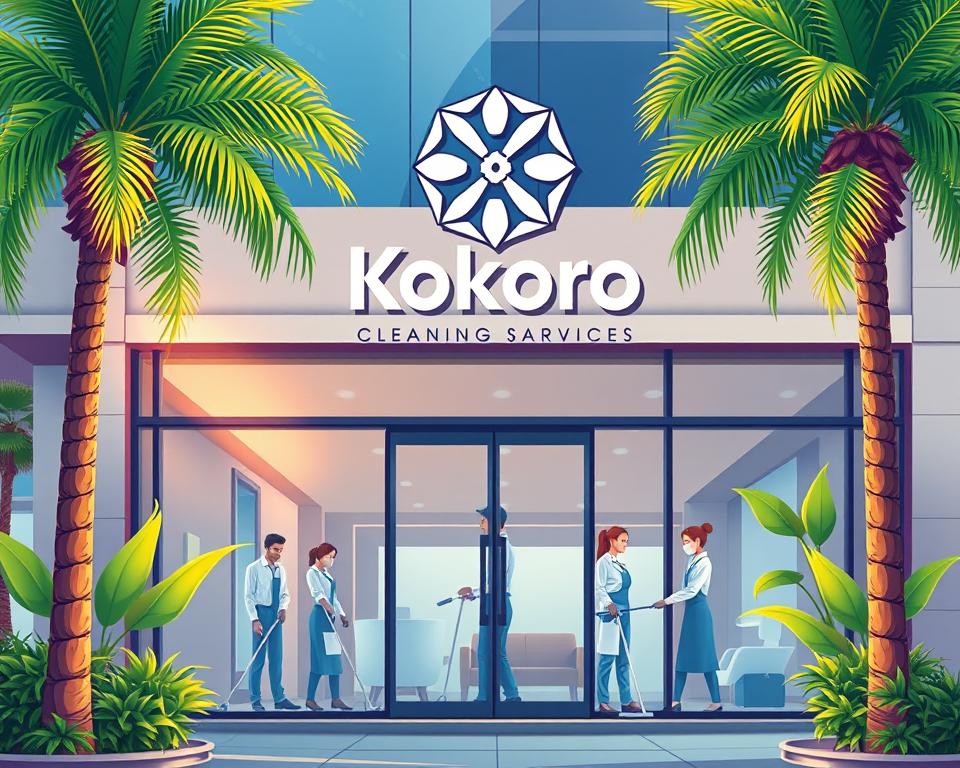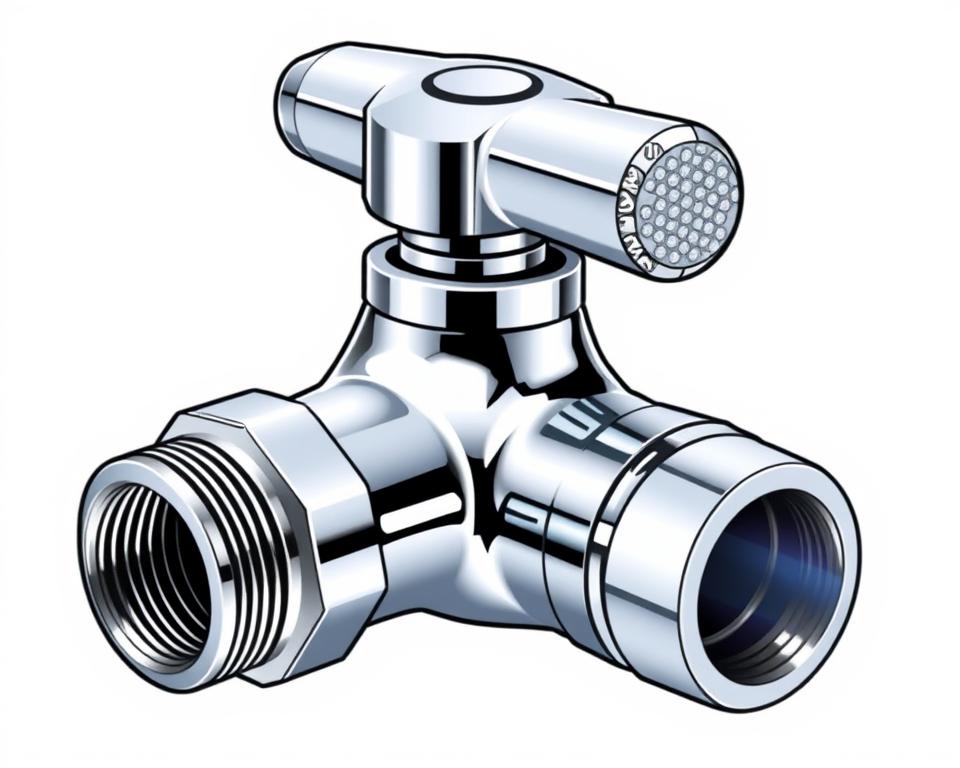Mastering Selvedge Denim Material: A Full Guide
A lone pair of classic Levi’s 501s dating back to the 1940s commanded $87,400 under the hammer at auction. What caused these jeans to outprice a luxury vehicle? It all comes down to their selvedge denim fabrication.
This top-tier denim signifies far more than mere cloth. It recalls the era when James Dean donned his 501s in Rebel Without a Cause, and Marlon Brando epitomized cool in The Wild One. Those style icons didn’t merely don jeans. They wore Nep denim crafted on vintage shuttle looms.
Artisanal denim gets its name from the self-finished edges that prevent fraying. The term “selvedge” combines “self” and “edge” to describe this unique weaving method. In contrast to mass-made denim, every yard of selvedge denim material demands time and craftsmanship.
The surface narrates a tale via gentle inconsistencies and organic variations. Each iteration gains personality as the indigo lightens. This individual progression renders heritage denim exceptional to collectors and style aficionados alike.
A lot of folks reckon premium denim outlasts standard jeans. The truth is more nuanced. Selvedge crafting produces lovely material with tidy edges and robust texture. However, sturdiness relies on cotton caliber and heft, not merely on weaving style. What sets artisanal denim apart is its ability to age gracefully and develop unique fade patterns over time.
What Is Selvedge Denim Material
Selvedge denim cloth stands apart from standard denim because of its special build and polished borders. It’s named for its “self-edge,” a tightly woven band that prevents fraying. This high-grade material signifies allegiance to slow fashion and age-old craft, marking a contrast with mass-made denim.

Decoding Self-Edge Construction
The term “selvedge” is a blend of “self” and “edge,” describing fabric with a clean, finished border. This narrow selvage appears on both sides of the fabric, doing away with extra finishing. Old-school mills craft it at roughly 30–32 inches wide, unlike contemporary denim’s 60-inch span.
Shuttle Looms and Their Unique Fabric Borders
Denim from shuttle looms derives its persona from antique weaving machines running at reduced speeds. They shuttle one weft yarn across the warp threads in one continuous action. This approach produces:
- Natural irregular slubs
- A plusher hand-feel versus modern denim
- Firmly locked edges that avoid fraying
- Genuine irregularities prized by denim fans
Difference Between Selvedge and Standard Denim
Conventional denim is woven on projectile looms sending weft yarns across wider bolts. Such weaving leaves loose edge fibers requiring overlock stitching to stop fraying. Selvedge denim fabric, on the other hand, takes more time to produce. It provides greater longevity and a special style, meriting its loftier price tag.
Origins and Evolution of Shuttle-Loomed Denim
Heritage denim’s story began in 19th-century American textile mills. Shuttle looms played a vital role, crafting cloth with self-finished edges to stop fraying. That approach yielded indigo-dyed denim slowly and painstakingly, guaranteeing each yard was made with precision. Its slender width evolved into a trademark of artisan denim manufacture.
From 1800s American Mills to Modern Revival
For upwards of a century, American factories leaned on shuttle looms. Names such as Cone Mills and White Oak furnished top denim to workwear makers. Come the 1970s, speedier projectile looms dominated, supplanting most shuttle setups. This shift was driven by the need for cheaper, mass-produced jeans. Numerous old mills shuttered or updated, letting antique looms sit idle.
How Japan Revived Selvedge Denim
During the 1980s, Japanese mills resurrected U.S. shuttle looms. The Osaka Five labels headed this resurgence:
- Studio D’Artisan
- Evisu
- Fullcount
- Warehouse
- Denime
These companies merged American vintage style with Japanese precision. They studied old Levi’s patterns, recreating classic indigo-dyed denim textures. By 2000, Japanese makers had overtaken the global artisan denim market.
Why Old-School Weaving Techniques Matter Today
Shuttle looms create special fabric features unmatched by modern equipment. The slower weaving process allows for irregular textures and deeper indigo penetration. Denim aficionados prize these flaws as hallmarks of genuine artistry.
| Shuttle Loom Features | Modern Loom Features |
|---|---|
| 29-31 inch fabric width | 60+ inch fabric width |
| 3-4 yards per hour | 15-20 yards per hour |
| Natural irregularities | Uniform texture |
| Self-finished edges | Cut edges requiring overlocking |
How Premium Denim Gets Made on Vintage Looms
The birth of premium denim begins with shuttle looms’ measured cadence. These contraptions stand apart from modern machines. They pass yarn across the entire width in one thread, sealing edges without extra finishing. This approach guarantees selvedge denim sports a neat, fray-free border.
Antique looms run slowly, churning out only 5–6 meters of slub denim per day. This sharply contrasts with current machines that manage 200 meters. The slower speed benefits the yarn in several ways:
- Lower tension in threads produces a plusher hand
- Natural irregularities remain intact for unique texture
- Varied surfaces produce signature fading
- Narrow fabric width (typically 29-32 inches) reduces cutting waste
Running these vintage looms demands expert operators. Operators fine-tune tension, track cadence, and carry out maintenance. Each loom has its own unique character. Many were built in the 1920s and require know-how passed through the ages. This tactile method turns shuttle-loomed denim into an authentic artisan good.
The slender width of unwashed denim from classic looms provides practical perks. Denim craftsmen can employ the finished edge as the outseam, cutting waste. This flaunts the cloth’s true craftsmanship. Every bolt carries history, with slight quirks that mass output cannot match.
Understanding Raw Denim vs Selvedge Differences
A lot of denim fans mix up raw denim and selvedge denim. This mix-up appears during premium jean hunts. The fact is they denote separate facets of denim creation. Knowing the difference helps you make better choices and appreciate each type’s uniqueness.
Why Selvedge Doesn’t Always Mean Raw
Selvedge indicates the shuttle-loom weave that forms self-finished borders. Raw denim signifies unwashed cloth fresh off the loom. A selvedge raw denim distributor often carries both rinse and dry options. Brands like Naked & Famous produce selvedge jeans, sometimes pre-washed or with stretch.
The loom process stays constant. Yet, the finishing process changes everything about the fabric’s feel and look.
Washed vs Unwashed Denim Options
Every denim piece begins as dry denim before washing. Factories make both regular and selvedge variants in unwashed form. Key contrasts include:
- Raw denim evolves custom fade patterns via use
- Rinse-treated denim provides quick comfort and sizing stability
- Sanforized raw stays closer to original measurements after first wash
- Unsanforized versions shrink significantly when soaked
Clearing Up Denim Myths
Not every raw denim is shuttle-loom produced. Modern projectile looms also produce unwashed fabric. Their appeal converges since consumers prize longevity, customization, and artistry in both selvedge and raw denim. Both varieties entice denim devotees prepared to spend time for ideal custom fading.
How to Identify Real Selvedge Denim
When you’re in the market for herringbone selvedge denim fabric, being able to spot genuine selvedge denim material is key. It distinguishes you from casual shoppers. Authentic selvedge denim features attributes absent in normal denim. Knowing these signs guarantees you’re buying true high-end denim.
Spotting the Signature Selvedge ID
Easiest method to confirm selvedge denim? Inspect the outseam. Cuff your jeans and check the outer-leg seam. True selvedge denim exhibits a crisp, bound edge featuring colored threads. This self-finished edge eliminates the need for overlocking stitches found on regular denim.
Cuffing your jeans reveals the selvedge ID, imparting distinctive flair to your look. The colored edge yarns run continuously down the outseam, creating that signature look denim enthusiasts adore. By contrast, non-selvedge jeans sport cut edges bound by serger stitches to stop fraying.
Quality Construction Hallmarks
High-grade premium denim shows distinct assembly details:
- Compact, consistent weave without loose fibers
- Pristine selvedge ends with no added stitching
- Stable colored yarn running the full outseam
- Substantial cloth weight indicative of shuttle-loom output
What Makes Rainbow Selvedge and Redline Special
Rainbow selvedge uses multiple tinted yarns in the ID, crafting a distinct multicolor trim. Redline selvedge, the renowned style, features red edge yarns and originates from heritage American mills. These unique selvedge forms carry premium prices thanks to their scarcity and aesthetic allure. Brands often showcase these details in listings, aiding you in spotting genuine heritage denim.
What Drives Artisanal Denim Prices
Newcomers are often astonished by artisanal denim price tags. A pair of selvedge jeans can be three to five times pricier than mass-produced ones.
Comprehending what drives these costs shows the actual value of premium denim.
Shuttle looms run far more slowly than contemporary looms. Though factory looms crank out fabric fast, old shuttle looms manage only 1–2 meters hourly. This slow process means a single roll of heritage denim takes days, not hours.
The slender breadth of selvedge fabric hikes up costs. As opposed to 60-inch standard denim, shuttle-loom premium denim is merely 28–32 inches across. This narrower width requires more careful cutting and planning to use the fabric efficiently.
Craft denim making happens in small runs. Suppliers like Okayama’s White Oak and Kuroki emphasize quality rather than scale. They staff master artisans who manage each stage:
- Hand-checking yarn tension
- Adjusting loom settings for each fabric type
- Inspecting every meter for flaws
- Managing rope-dyeing processes that take weeks
These denim makers view their craft as art. They innovate with special yarns and refine indigo dyeing recipes inherited over ages. Backing heritage denim helps mills safeguard textile legacies and artisans devoted to their work.
Black Selvedge Denim Fabric Wholesale Options
Premium denim availability now reaches beyond Japan’s heritage mills. U.S. labels now vie in the market, offering diverse black selvedge denim wholesale. To find the best supplier, it’s essential to understand quality markers and the origins of authentic materials.
Finding Quality Suppliers and Manufacturers
Top vendors underscore traditional weaving and genuine devotion to craft. When seeking a selvedge raw denim wholesale source, pick mills operating antique shuttle looms. These suppliers offer detailed fabric specs, including weight, weave pattern, and dye methods.
Gold Selvedge Denim Fabric Manufacturers to Know
Gold-ID selvedge producers spotlight rich edge threads, boosting denim opulence. Leading mills produce these specialty fabrics in limited quantities, attracting boutique brands. The gold thread ID gives these fabrics a unique finish, distinguishing them from standard options.
Sourcing Specialty Fabrics Like Nep Denim
Unique textiles such as nep denim require dedicated sourcing paths. This textured fabric features intentional irregularities for unique visual interest. Partnering directly with mills guarantees availability of these niche weaves.
| Fabric Type | Minimum Order | Lead Time | Price Range per Yard |
|---|---|---|---|
| Black Selvedge | 500 yards | 6-8 weeks | $12-18 |
| Gold ID Selvedge | 300 yards | 8-10 weeks | $15-22 |
| Nep Denim | 400 yards | 10-12 weeks | $14-20 |
Selvedge Styles and Variants
Selvedge denim circles stretch beyond simple indigo. Today, mills create a wide range of textures and patterns. These demonstrate shuttle-loom weaving’s flexibility. Ranging from faint surface quirks to striking patterns, they deliver one-of-a-kind personality that evolves elegantly with use.
All About Slub Denim Texture
Slub denim’s trademark rough texture stems from uneven yarns. They feature thick and thin zones, yielding an organically varied fabric face. Woven on shuttle looms, they form slub-textured selvedge that fades unpredictably.
Every slub denim pair evolves a distinct fade motif. Thick slub raised zones age in contrast to smooth zones, giving each a unique look.
Herringbone Selvedge Traits
Herringbone selvedge cloth sports a zigzag weave reminiscent of fish skeletons. The pattern forms diagonal ribs that reverse direction periodically. The pattern adds visual interest and gives the fabric extra strength.
Labels such as Iron Heart and The Strike Gold often employ this weave in their high-end lines.
Understanding Striped Denim & Specialty Weaves
Striped denim blends different yarns to craft vertical or horizontal banding. Factories weave these patterns by switching colored threads as they work. Some popular variations include:
- Hickory stripe with alternating indigo and white
- Railroad stripe featuring thin pinstripes
- Wabash stripe with printed dots over stripes
| Fabric Type | Visual Pattern | Fade Characteristics |
|---|---|---|
| Slub Denim | Bumpy, irregular surface | High contrast, uneven fading |
| Herringbone | Zigzag diagonal lines | Subtle vertical streaking |
| Striped Denim | Alternating color bands | Pattern remains visible after fading |
Caring for Your Heritage Denim Investment
Heritage denim needs particular attention to evolve its distinct personality. Unlike regular jeans, raw denim and dry denim transform with wear. They create personalized fade patterns that tell your story.
The first few weeks with artisanal denim can feel stiff and uncomfortable. This experience is expected. It takes time for the cloth to soften and contour your form. Certain fans quicken the break-in by shower-wearing or damp squatting in their jeans. Others choose a slower, natural wear-in routine.
Raw denim shows top fade patterns when you postpone laundering. Skin oils and regular friction form whiskers by the knees and honeycombs at the rear. Numerous denim heads wait half a year before the initial wash, with some waiting a full year. That patience rewards you with bold, custom fades matching your motion.
At wash time for dry denim, invert and launder in cold water. Avoid spinning and air-dry out of sunlight. Others opt for gentle hand-wash in a bathtub using a soft detergent. Refrain from hot washes and dryers to prevent shrinkage and loss of fades.
Your denim keeps appreciating as you care for it properly. Each use builds character, turning your jeans into a singular piece. The firm break-in becomes a flexible second skin mirroring your daily life.
Where to Buy Quality Indigo-Dyed Denim Today
The revival of selvedge denim has unlocked new paths for denim lovers. Large chains now offer indigo denim, while niche shops continue premium slow-fashion offerings. This allows consumers to find authentic selvedge options at various price points, catering to different budgets and styles.
Levi’s sells its 501 Original Fit Selvedge for $148, bringing heritage craft to more people. Uniqlo offers its Selvedge Straight at $50, striking a balance between style and price. For those looking for higher-end options, Buck Mason features Japanese Loom State Selvedge Full-Saddle Jeans at $248. Iron Heart elevates artisan denim with its 634s-18 Vintage Denim for $385, sold at Self Edge.
U.S. labels such as Todd Snyder and Buck Mason now rival Japanese experts in the selvedge arena. These brands recognize the importance of heritage weaving techniques and quality in slow fashion. Online or offline, good indigo-dyed denim is easier than ever for American shoppers devoted to genuine craft.








